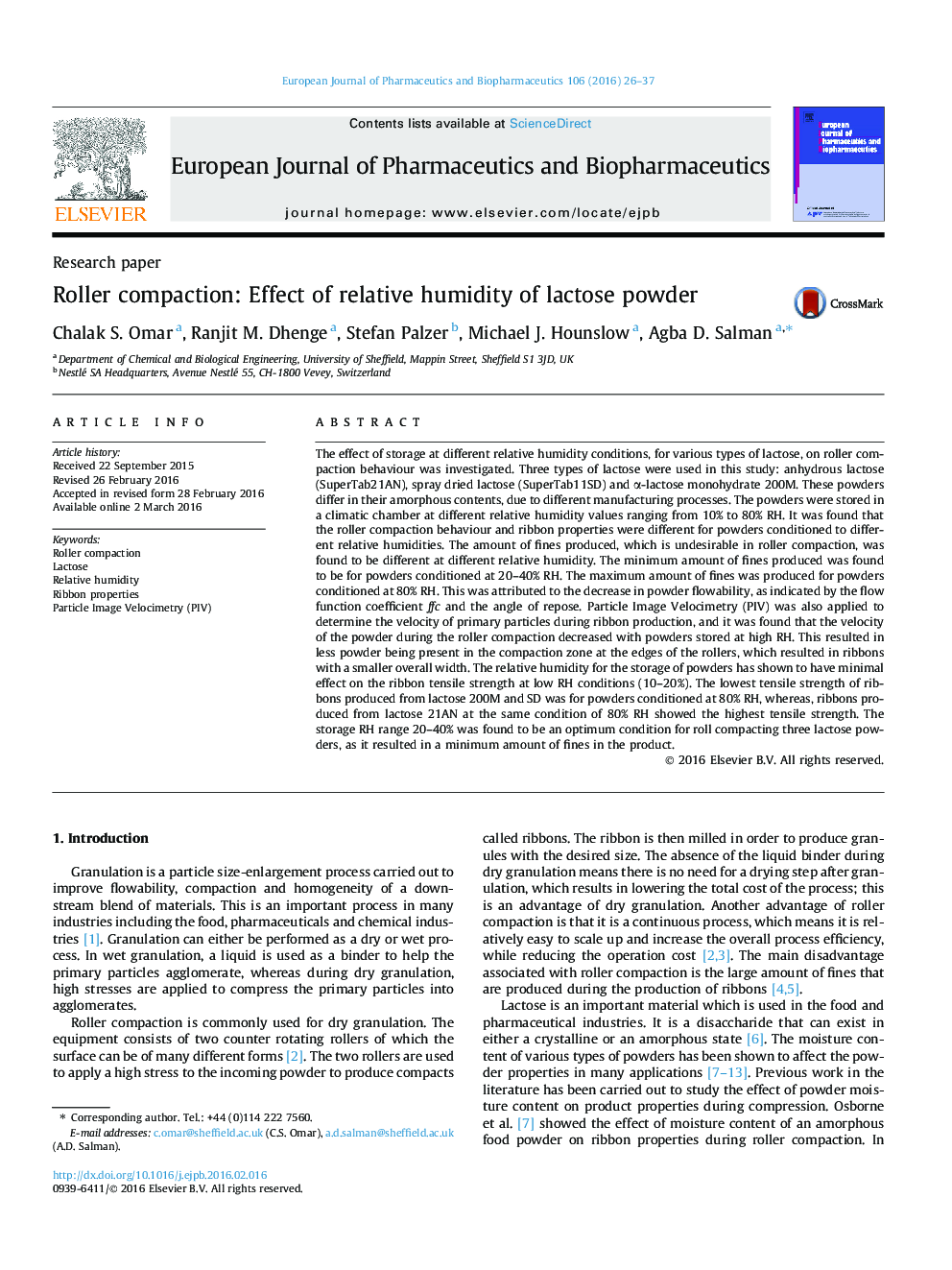| کد مقاله | کد نشریه | سال انتشار | مقاله انگلیسی | نسخه تمام متن |
|---|---|---|---|---|
| 2083216 | 1545317 | 2016 | 12 صفحه PDF | دانلود رایگان |
The effect of storage at different relative humidity conditions, for various types of lactose, on roller compaction behaviour was investigated. Three types of lactose were used in this study: anhydrous lactose (SuperTab21AN), spray dried lactose (SuperTab11SD) and α-lactose monohydrate 200M. These powders differ in their amorphous contents, due to different manufacturing processes. The powders were stored in a climatic chamber at different relative humidity values ranging from 10% to 80% RH. It was found that the roller compaction behaviour and ribbon properties were different for powders conditioned to different relative humidities. The amount of fines produced, which is undesirable in roller compaction, was found to be different at different relative humidity. The minimum amount of fines produced was found to be for powders conditioned at 20–40% RH. The maximum amount of fines was produced for powders conditioned at 80% RH. This was attributed to the decrease in powder flowability, as indicated by the flow function coefficient ffc and the angle of repose. Particle Image Velocimetry (PIV) was also applied to determine the velocity of primary particles during ribbon production, and it was found that the velocity of the powder during the roller compaction decreased with powders stored at high RH. This resulted in less powder being present in the compaction zone at the edges of the rollers, which resulted in ribbons with a smaller overall width. The relative humidity for the storage of powders has shown to have minimal effect on the ribbon tensile strength at low RH conditions (10–20%). The lowest tensile strength of ribbons produced from lactose 200M and SD was for powders conditioned at 80% RH, whereas, ribbons produced from lactose 21AN at the same condition of 80% RH showed the highest tensile strength. The storage RH range 20–40% was found to be an optimum condition for roll compacting three lactose powders, as it resulted in a minimum amount of fines in the product.
Compressibility factor (K) for the three types of lactose at different relative humidities.Figure optionsDownload high-quality image (91 K)Download as PowerPoint slide
Journal: European Journal of Pharmaceutics and Biopharmaceutics - Volume 106, September 2016, Pages 26–37
